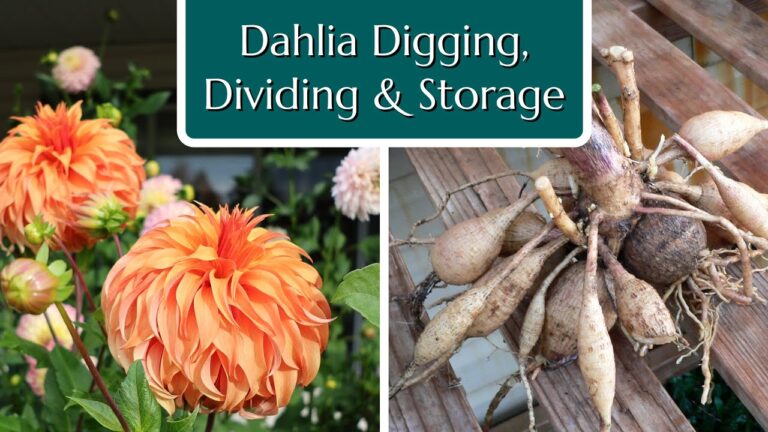In a recent video, Jason from Fraser Valley Rose Farm delved into a common question among rose gardeners: Why do roses change color? Many rose enthusiasts are surprised to see their vibrant blooms suddenly shift hues, from subtle differences to dramatic transformations. Jason explains the science behind these changes, dispelling myths and offering insights into the natural and genetic factors at play.
This article unpacks Jason’s observations, expanding on key causes of color changes in roses, and why this intriguing phenomenon is often misunderstood.
Myths and Misconceptions: Cross-Pollination is Not the Cause
One persistent myth is that bees transferring pollen between plants can cause roses to change color. Jason categorically debunks this notion, explaining that cross-pollination affects seeds and future generations, not the existing plant or its flowers.
When a rosebud forms, its color is determined by the genetics of the plant itself. Pollen from another plant cannot alter the color of an already-formed bloom. This misunderstanding stems from a basic misinterpretation of plant biology, which Jason clarifies in his video.
Natural Variations in Rose Color
While roses don’t change color due to cross-pollination, subtle variations can occur naturally in the garden. These shifts are often influenced by environmental factors, such as:
- Temperature: Cooler temperatures can intensify certain pigments, leading to deeper or more saturated hues, while heat may wash out colors.
- Moisture Levels: Drought stress or high moisture availability can also impact petal coloration, though the effect is generally mild.
- Aging Blooms: Many roses change as they age, with colors softening or fading over time. For example, an apricot bud might mature into a pale yellow bloom.
These natural variations are usually minor and within the expected range of a rose’s genetic potential.
Dramatic Color Changes: Grafted Roses and Rootstock Shoots
One of the most dramatic causes of color change in roses comes from grafted plants. Many modern roses are grafted onto vigorous rootstocks to enhance growth and hardiness. However, if the rootstock sends up shoots, these will produce flowers that reflect the rootstock’s genetics rather than the grafted variety.
How to Identify Rootstock Shoots
- Look for new shoots with unusual foliage (different shape, color, or texture).
- Flowers from these shoots will often be simpler, with fewer petals, and may differ dramatically in color from the grafted rose.
Common Rootstocks and Their Traits
- Dr. Huey: Produces dark red blooms and is a common rootstock for climbers in North America.
- Multiflora or Canina: These rootstocks often produce clusters of small white flowers and are common in cooler climates like Canada.
- Fortuniana: Used in Florida and other warm climates, this rootstock excels in sandy soils but also differs significantly from grafted scions.
What to Do
To resolve the issue, trace the shoot back to its origin near the base of the plant and cut it off as deeply as possible, ideally below soil level. This prevents the rootstock from taking over.
Genetic Mutations: Sporting and Reverting Roses
Another fascinating reason for color changes is genetic mutation, commonly known as “sporting.” A sport occurs when a single branch or stem produces flowers that differ from the rest of the plant. For example, a yellow rose might suddenly produce white flowers on one branch.
Famous Examples of Sports
- Iceberg: The classic white shrub rose has sported into colors like pink, burgundy, and even climbing forms.
- Rosa Gallica Officinalis and Rosa Mundi: The ancient apothecary rose (pink) sported into the striped Rosa Mundi in the Middle Ages. Interestingly, Rosa Mundi often reverts to its original pink form on some branches.
What Makes a Sport Valuable?
If the mutation is stable (meaning it consistently produces the new color), it can be propagated as a new variety. However, stability must be assessed carefully before a sport is considered reliable for further propagation.
How to Address Color Changes in Your Roses
If your roses change color, the solution depends on the cause:
- Environmental Factors: Accept that minor variations are natural and part of a rose’s charm.
- Rootstock Shoots: Prune aggressively to remove unwanted growth from below the graft union.
- Sporting: Embrace the unique new flowers, or propagate the sport if it proves stable.
By understanding these causes, gardeners can better manage their roses and appreciate the quirks of this beloved plant.
Roses Changing Color: A Natural Wonder
Color changes in roses are often surprising but rarely cause for concern. Jason’s video provides clarity, busting myths like cross-pollination while exploring the fascinating interplay of genetics, environment, and rose production techniques.
Whether it’s a subtle shift caused by temperature or a dramatic mutation resulting in an entirely new bloom, these changes remind us of the dynamic beauty of roses.





